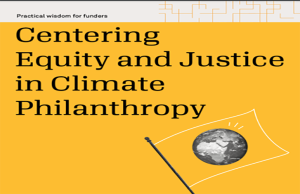COVID-19 has caused many nonprofit managers to shift their focus to emergency planning for an infectious disease. Your organization might already have plans in place to help mitigate the risk of a public health crisis. Now is a good time to re-visit contingency plans and start training staff on how to handle a crisis.
The Nonprofit Risk Management Center (NRMC) compiled some tips to help you hone your crisis management skills to offset an infectious disease crisis.
- Wash your hands.
As simple as it sounds, effective hand washing is the best defense against illness. Viruses like COVID-19 are “enveloped,” meaning that a fatty outer covering surrounds it. Soap and water dissolve the viral envelope, which inactivates them, lessening your chance of getting sick. The CDC recommends scrubbing your hands with soap and water for 20 seconds (about the length of time it takes to hum “Happy Birthday” to yourself twice) before rinsing and drying. Heat alone won’t kill the virus, so hot-air hand dryers aren’t a good substitute for old-fashioned hand washing.
If you can’t wash your hands with soap and water, a good alternative is an alcohol-based hand sanitizer with at least 60 percent alcohol.
- Safeguard your live events.
In the wake of COVID-19, many organizations are trying to decide if they should have their live event or cancel. The number of factors that impact your decision to cancel or modify your event can seem dizzying. Start with the big questions. When will your event take place? Where is the event being held? Where will attendees and exhibitors travel from? Also, keep in mind other contributing factors such as crowd density, contact between participants, attendee registration information collected for notifications of a public health concern during the event and whether attendees may be in a high-risk group.
You should monitor local, national, and international public health departments and agencies for the latest updates on COVID-19 and for protocols on what to do if someone becomes sick. Remember to stay calm and communicate responsibly.
It is essential to begin conversations early with your planning committee, venue, and insurance advisors and carriers. Make sure to include your insurance advisor and attorney when considering the long-term impact of the decision you make. The Professional Convention Management Association (PCMA) provides some useful tips when reviewing your contracts and insurance in their article “COVID-19: Is Your Event Covered?”
While you review your crisis management plan and host discussions with your organization’s stakeholders, remember to consider multiple alternatives. Some options could include:
- Reducing the size of your meeting;
- Holding your event on a different date — which could mean postponing to next year or several years down the road for events that are booked well in advance;
- Changing the event format from a live event to an online event; or,
- Canceling the entire event.
Be sure to communicate with your participants in advance. Email and web-based information are expeditious methods to disseminate consistent and timely information. Consider adding or linking to safety tips from trustworthy sources (e.g., World Health Organization, U.S. Travel Association) as part of your conference news blasts. Even if you are currently monitoring the situation, keep participants appraised of your plans; advanced notice and information will enhance their trust in your organization.
- Make sure your contingency plans and BCP are up to date.
Due to the looming risk of an infectious disease crisis, consider adding targeted response activities as part of your business continuity plan. This plan should consider how to prevent occupational exposure to viruses like COVID-19 and SARS or other infectious diseases.
While the The Occupational Safety and Health Administration (OSHA) doesn’t have a standard that covers COVID-19, the agency’s recommendations include you consider “The General Duty Clause, Section 5(a)(1) of the Occupational Safety and Health (OSH) Act of 1970, 29 USC 654(a)(1), which requires employers to furnish to each worker “employment and a place of employment, which are free from recognized hazards that are causing or are likely to cause death or serious physical harm.” This could mean that your infectious disease response plan includes policies for provisions like extended teleworking for team members who aren’t required to be onsite and flexible scheduling options for mission-critical employees.
The potential for an outbreak can also have a significant impact on employee absenteeism. Team members may become sick, need to care for loved ones who are ill, or in the event of school and childcare center closures may need to stay home to care for children. One way to estimate your organization’s potential for absenteeism is to poll employees using an Americans With Disabilities Act (ADA) compliant survey. It’s crucial to ensure employee privacy and remember that this tool is for statistical analysis only.
The following is an example provided by the U.S. Equal Employment Opportunity Commission (EEOC):
ADA-COMPLIANT PRE-PANDEMIC EMPLOYEE SURVEY
Directions: Answer “yes” to the whole question without specifying the factor that applies to you. Simply check “yes” or “no” at the bottom of the page.
In the event of a pandemic, would you be unable to come to work because of any one of the following reasons:
- If schools or day-care centers were closed, you would need to care for a child;
- If other services were unavailable, you would need to care for other dependents;
- If public transport were sporadic or unavailable, you would be unable to travel to work; and/or;
- If you or a member of your household fall into one of the categories identified by the CDC as being at high risk for serious complications from the pandemic influenza virus, you would be advised by public health authorities not to come to work (e.g., pregnant women; persons with compromised immune systems due to cancer, HIV, history of organ transplant or other medical conditions; persons less than 65 years of age with underlying chronic conditions; or persons over 65).
Answer: YES______ , NO_______
- Encourage workplace destressing activities.
It’s no secret that stress lowers immunity. Stress can hit your team members, volunteers, and leaders from a variety of sources. Worrying about the risk of an outbreak touching close to home has added another external stressor. Combating stress is important under even normal conditions, but even more so when the risk of exposure is increased.
Encourage staff members to engage in workplace de-stressing activities. Simple ideas include:
- Organize a lunchtime walking group to enjoy the spring air. Even brief exercise lifts the mood and reduces stress;
- Encourage managers to maintain an open-door policy. Transparency and open lines of communication give employees the security to ask questions and voice concerns about what’s going on in the workplace; and,
- Promote short breaks as needed and the importance of taking lunch. Employees can get wrapped up in projects and lose track of time. A coffee break, some brief socialization, and lunch away from your desk will clear your head and re-energize the team to get back to the mission.
- Know your rights as an employer/employee and communicate.
Keeping your workforce healthy is likely top of mind. Still, you may worry about the risks of approaching health-related issues with your employees. The EEOC reminds employers that it is well within their rights to encourage or require employees who are experiencing flu-like symptoms during a pandemic to leave the workplace.
Take this opportunity to send a refresh to employees about your organization’s policies regarding sick leave or personal leave. If your organization requires a physician’s clearance before returning to work, make sure team members know the proper channels to submit this information.
Use these five tips to start having internal discussions now, and your organization will be more prepared to mitigate the risk of a public health emergency becoming a reality in your area. The ultimate goal is to ensure your employees and stakeholders are safe and calm as you continue to provide your mission-critical services to the community. Keep calm and wash your hands.
*****
Katharine Nesslage and Whitney McKim are Project Managers at the Nonprofit Risk Management Center. Katharine and Whitney welcome your questions and feedback about crisis management planning risks at [email protected], [email protected], or 703.777.3504.












